8 start with H start with H
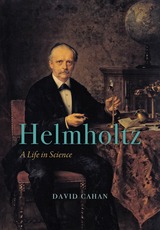
Utilizing all of Helmholtz’s scientific and philosophical writings, as well as previously unknown letters, this book reveals the forces that drove his life—a passion to unite the sciences, vigilant attention to the sources and methods of knowledge, and a deep appreciation of the ways in which the arts and sciences could benefit each other. By placing the overall structure and development of his scientific work and philosophy within the greater context of nineteenth-century Germany, Helmholtz also serves as cultural biography of the construction of the scientific community: its laboratories, institutes, journals, disciplinary organizations, and national and international meetings. Helmholtz’s life is a shining example of what can happen when the sciences and the humanities become interwoven in the life of one highly motivated, energetic, and gifted person.
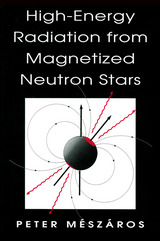

Nonlethal weapons are going to play an increasingly important role in combat and in civil conflict in the coming years. They offer a way of controlling dissent and insurgencies without increasing antagonism, particularly in peacekeeping operations. They prevent the unnecessary loss of life among the non-combatant population of adversaries and they decrease the number of casualties due to friendly fire. The need for new nonlethal weapons technologies has been well documented by researchers and policymakers. High-powered electromagnetic radiators are aimed at addressing that need.
Beginning with a brief survey of the history of warfare, D. V. Giri systematically examines various nonlethal weapons technologies, emphasizing those based on electromagnetics. His systematic review of high-power electromagnetic radiators is organized by frequency, coverage, and level of sophistication of underlying technologies. He provides many examples of complete systems, going from wall-socket to radiated waves.
Giri's focus on electromagnetics makes this book essential reading for researchers working with high-power microwave and electromagnetic pulse technologies as well as antenna engineers.
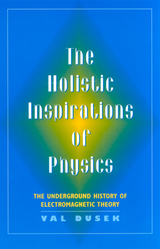
While many books have claimed parallels between modern physics and Eastern philosophy, none have dealt with the historical influences of both Chinese traditional thought and non-mechanistic, holistic western thought on the philosophies of the scientists who developed electromagnetic field theory. In The Holistic Inspirations of Physics, R. Valentine Dusek asks: to what extent is classical field theory a product of organic and holistic philosophies and frameworks?
Electromagnetic theory has been greatly influenced by holistic worldviews, Dusek posits, and he highlights three alternative scientific systems that made the development of electromagnetic theory possible: medieval Chinese science, Western Renaissance occultism, and the German romantic traditions. He situates these "alternative" approaches in their social context and background, and traces their connection with components of “accepted” physical science in relation to a number of social movements and philosophical theories.
Readers will learn of specific contributions made by these alternative traditions, such as the Chinese inventing the compass and discovering the earth's magnetic field and magnetic declination. Western alchemical ideas of active forces and "occult" influences contributed to Newton's theory of gravitation force as action at a distance, rather as a result of purely mechanical collisions and contact action.
Dusek also describes the extent to which women's culture supplied (often without credit) the philosophical background ideas that were absorbed into mainstream field theory.
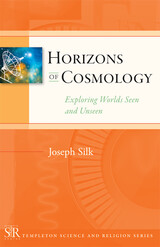
Indeed, while the physical laws and origins of the universe can be endlessly complex, even Einstein once mused that they could be explained simply enough to be grasped by nonspecialists. To that end Silk begins by introducing the basic story of the major discoveries in cosmology over the past century—wherein we learned that we live in an expanding universe populated with galaxies and stars. The middle chapters examine a number of contemporary puzzles such as dark matter and dark energy. The last third of the book looks at the human side of cosmology and moves to the more philosophical frontiers of the field, such as concepts of multiverses and time travel—areas of exploration where some crossover into speculative territory becomes unavoidable.
In the past century alone, our understanding of the universe has expanded exponentially, and it will be fascinating to see what discoveries the next hundred years hold. Few books will provide such a thorough understanding of where we have been and what might lie ahead as Horizons of Cosmology.
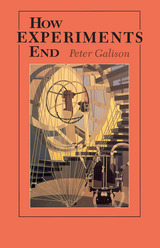
"Anyone who is seriously concerned with understanding how research is done should read this. There have been many books on one or another part of its subject matter but few giving such insights into how the research is done and how the consensus of discovery is arrived at."—Frank Close, New Scientist
"[Galison] is to be congratulated on producing a masterpiece in the field."—Michael Redhead, Synthese
"How Experiments End is a major historical work on an exciting topic."—Andy Pickering, Isis
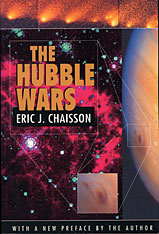
The Hubble Space Telescope is the largest, most complex, and most powerful observatory ever deployed in space, designed to allow astronomers to look far back into our own cosmic past with unprecedented clarity. Yet from its launch in 1990, when it was discovered that a flawed mirror was causing severe “myopia” and sending fuzzy images back to Earth, the HST has been at the center of a controversy over who was at fault for the flaw and how it should be fixed. Now Eric Chaisson, a former senior scientist on the HST project, tells the inside story of the much heralded mission to fix the telescope. Drawing on his journals, Chaisson recreates the day-to-day struggles of scientists, politicians, and publicists to fix the telescope and control the political spin. Illustrated with “before and after” full-color pictures from the telescope and updated with a new preface, The Hubble Wars tells an engaging tale of scientific comedy and error.
In this new edition, coming at the half-way point in the HST’s planned mission of fifteen years, Chaisson has brought the Hubble story up-to-date by sorting out the spectacular from the mundane contributions the HST has made to our knowledge of the Solar System, the Milky Way Galaxy, and the distant galaxies of deep space.
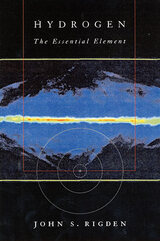
Seduced by simplicity, physicists find themselves endlessly fascinated by hydrogen, the simplest of atoms. Hydrogen has shocked, it has surprised, it has embarrassed, it has humbled--and again and again it has guided physicists to the edge of new vistas where the promise of basic understanding and momentous insights beckoned. The allure of hydrogen, crucial to life and critical to scientific discovery, is at the center of this book, which tells a story that begins with the big bang and continues to unfold today.
In this biography of hydrogen, John Rigden shows how this singular atom, the most abundant in the universe, has helped unify our understanding of the material world from the smallest scale, the elementary particles, to the largest, the universe itself. It is a tale of startling discoveries and dazzling practical benefits spanning more than one hundred years--from the first attempt to identify the basic building block of atoms in the mid-nineteenth century to the discovery of the Bose-Einstein condensate only a few years ago. With Rigden as an expert and engaging guide, we see how hydrogen captured the imagination of many great scientists--such as Heisenberg, Pauli, Schrödinger, Dirac, and Rabi--and how their theories and experiments with this simple atom led to such complex technical innovations as magnetic resonance imaging, the maser clock, and global positioning systems. Along the way, we witness the transformation of science from an endeavor of inspired individuals to a monumental enterprise often requiring the cooperation of hundreds of scientists around the world.
Still, any biography of hydrogen has to end with a question: What new surprises await us?
READERS
Browse our collection.
PUBLISHERS
See BiblioVault's publisher services.
STUDENT SERVICES
Files for college accessibility offices.
UChicago Accessibility Resources
home | accessibility | search | about | contact us
BiblioVault ® 2001 - 2024
The University of Chicago Press









